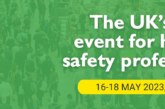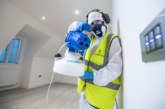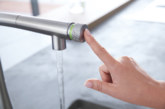Alcumus specialises in workplace risk management solutions for small and large enterprises. Mike Harris, Head of Customer Success and Nicola Barker, VP of Product at Alcumus, share three critical factors for HSE inspection success.
Before the outbreak of COVID-19, the prospect of an unexpected knock on the door by a Health and Safety Executive (HSE) inspector was enough to keep the most cautious employers on their toes. Amid the outbreak, a magnitude of new challenges must be considered and addressed. As the HSE continue to carry out spot inspections, businesses must ensure that employees and members of the public are protected from familiar yet dangerous hazards and that its sites are, and continue to be, COVID-19 secure.
Get brutally honest about your in-house resources
In 2019/20, the HSE issued £35.8 million in fines to duty holders found guilty of health and safety offences, with the average fine per case costing £110,000.1 It’s crucial that you understand exactly what you need to do to be compliant.
The regulations are often complex and even more so for bigger businesses that have multiple sites and disparate workforces. Your organisational structure must be evaluated realistically. It’s been an earth-shattering year for bringing about change in the workplace, but managing an issue of this scale internally isn’t an adjustment that’s readily feasible.
The safety of your business and workforce won’t wait. When dealing with a vast of volume of risky environments, it’s far better to seek dedicated health and safety support if you have any concerns about your in-house resources.
Learn the vital difference between a risk assessment and a COSHH assessment
HSE Inspectors have the right to request, inspect and take copies of documentation so it’s essential that assessments are prepared and ready for when an inspector calls. However, businesses are regularly confused about the difference between a risk assessment and a Control of Substances Hazardous to Health (COSHH) assessment. The documents serve similar but distinct purposes and understanding the difference is vital to ensuring worker safety.
In short, a risk assessment considers possible dangers, risks or accidents that could harm an employee, customer or member of the public. It is up to you to decide if you are taking the necessary steps to prevent that harm.
A COSHH assessment is used to protect people against health risks that may arise from work activities that expose them to hazardous substances. You must be able to demonstrate that you:
- Understand the hazards and subsequent risks of substances used in the activity
- Appreciate the necessity to implement appropriate control measures to minimise the risk to health
- Identify such control measures and know how to implement them (such as using engineering controls or personal protective equipment (PPE)
- Know what to do when something goes wrong (first aid procedures, spillage requirements, etc.)
Understand the importance of data-driven decisions
When a HSE inspector calls and wants to know about the main health and safety issues in your workplace, data can prove that your business has all the necessary procedures in place.
Data-driven insights can also ensure that your organisation is proactive rather than reactive. According to a PwC survey of more than 1,000 senior executives, highly data-driven organisations are three times more likely to report significant improvements in decision-making compared to those that rely less on data.
In the world of health and safety, the ability to use data to build an improvement plan before risks turn into crisis can be lifesaving for your business, your reputation and your people.









